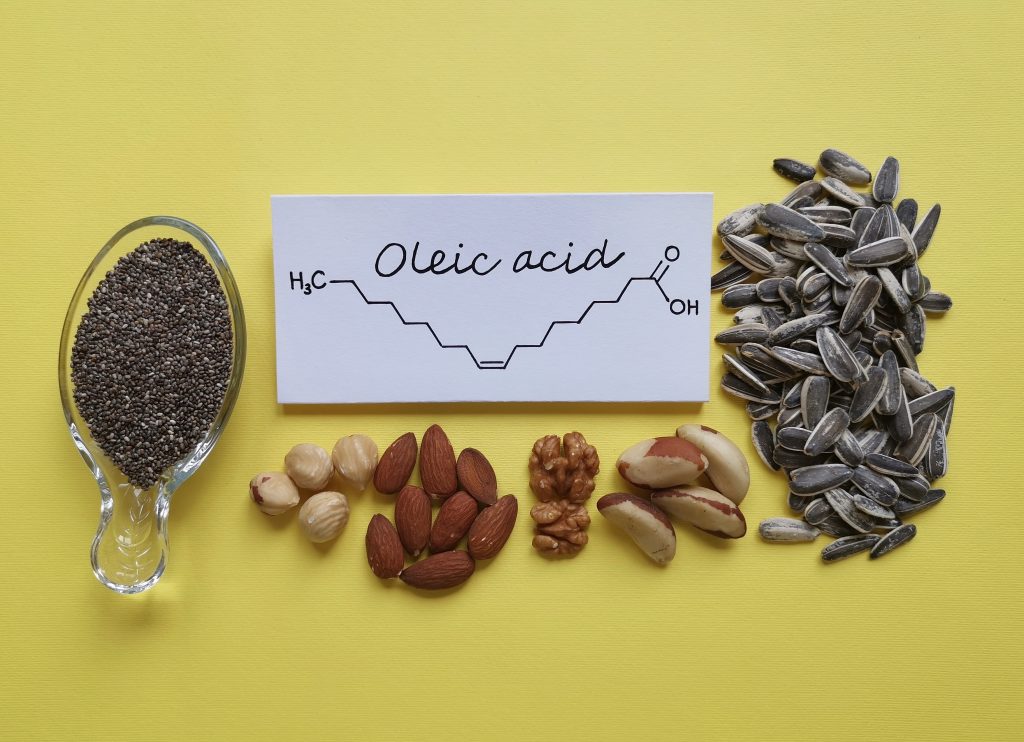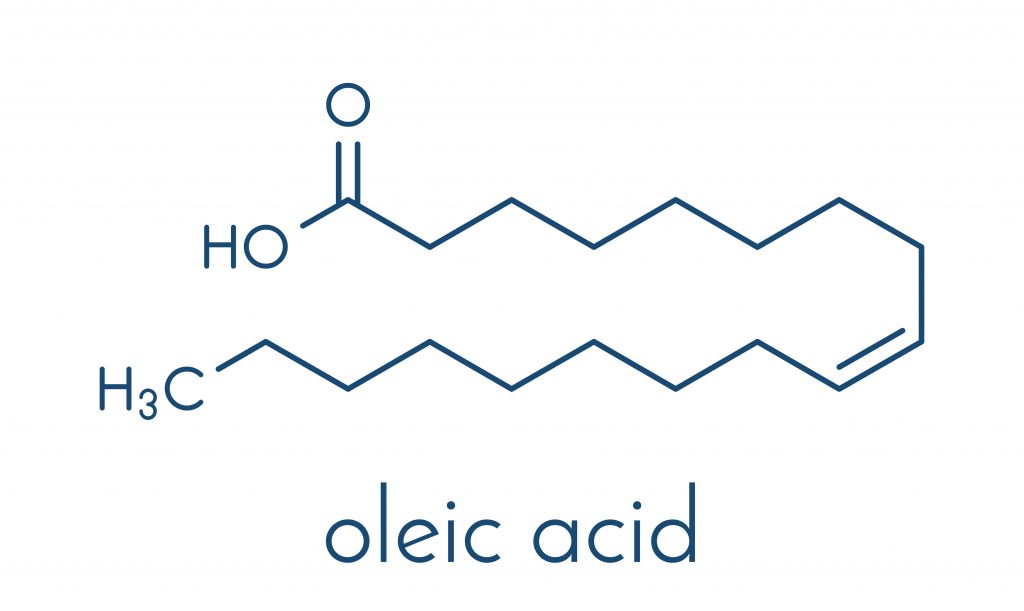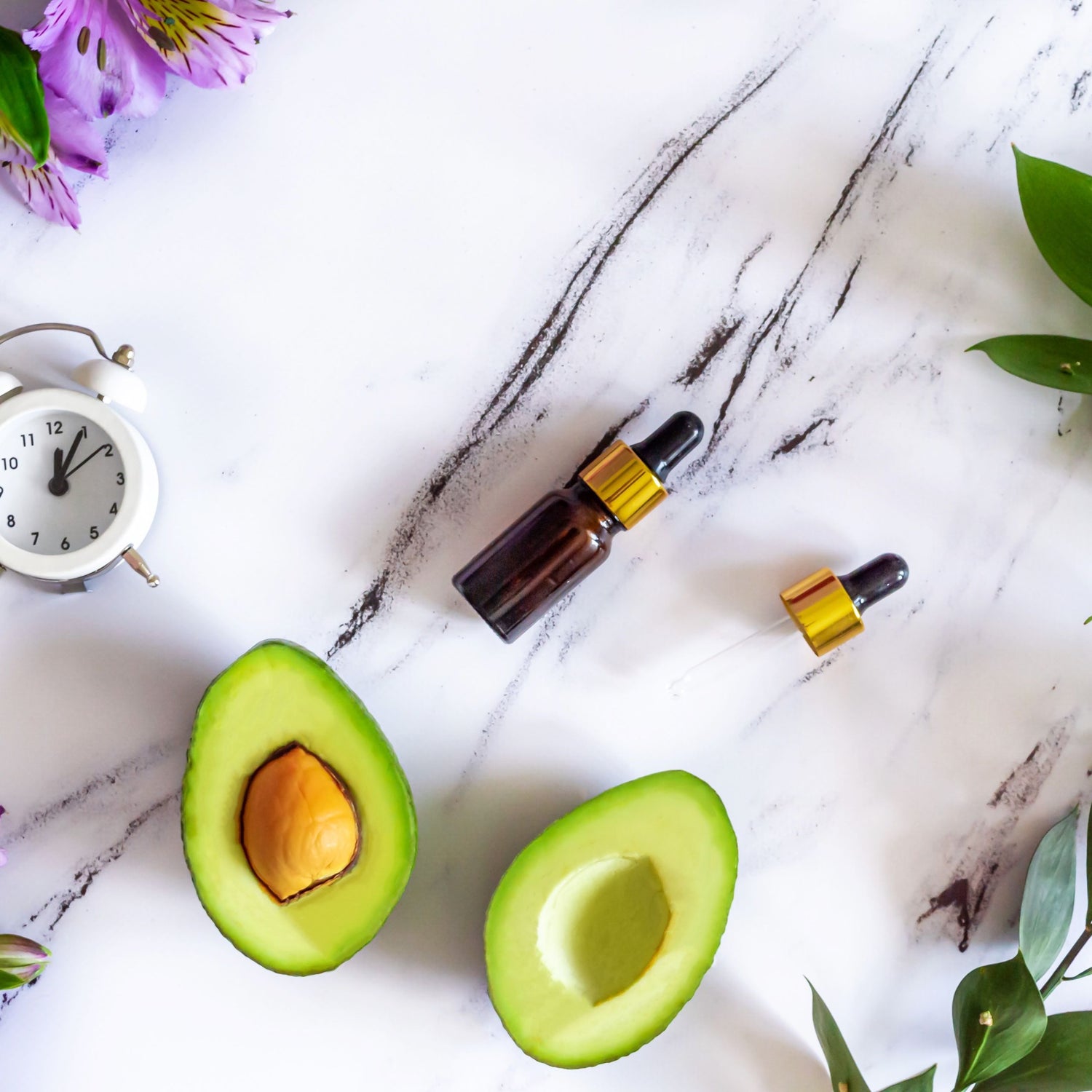What is Oleic Acid?
Also known as “Omega-9” is a fatty acid that is found in animal and various vegetable oils and fats. Fatty acids are vital to life in general. They are the main components of food fats, oils, and fat deposits in animals and man. Monounsaturated fats like oleic acid are less likely to spoil than other fats. This makes them useful in food preservation. It is also worth noting that they are also the building blocks of hair follicles. Scientists are now looking into the potential effects of oleic acid for hair health and restoration.
 Oleic acid can be found in lean foods, like tree nuts such as almonds
Oleic acid can be found in lean foods, like tree nuts such as almonds
Research: Does Oleic Acid For Hair Loss Play a Direct Role?
Research findings show that oleic acid may help increase the skin's permeability and thus help increase the effectiveness of other topical hair loss treatments that block the 5α-reductase enzyme.
 Although oleic acid can be found in many common food dishes in America, it is best to choose healthier sources
Although oleic acid can be found in many common food dishes in America, it is best to choose healthier sources
Blocking 5α-reductase to Treat Thinning Hair
5α-reductase breaks down testosterone. One of the byproducts from this process is DHT, a major culprit in genetic pattern baldness, also known as androgenic alopecia (APA). Although there are many causes of hair loss, researchers estimate that 90% of cases are due to genes that make a person sensitive to DHT. Genetic baldness is primarily due to DNA (genes) that produces weaker DHT protein receptors on the hair follicles. The binding of DHT to these receptors initiates processes that shrink the follicles. Over time, they lose their ability to produce new hair shafts. Some drug chemicals (natural or not) can actually block the 5α-reductase enzyme. This prevents testosterone from breaking down, making DHT less available in the bloodstream.
Scientists Learn About Oleic Acid for Hair Loss Treatment, As A Helper Agent
Oleic acid and other fatty acids may improve the skin's receptivity to 5α-reductase blockers used in topical hair loss treatments. This is likely to enhance the potency of the active ingredients used. The results of a 2012 study (1) reveal a performance boost of a 5α-reductase blocker due to the presence of oleic acid, along with other fatty acid components. Researchers created niosomes to deliver a semi-purified form of rice bran, OSF3, known to inhibit 5α-reductase. They prepared these vehicles from different cationic lipids with various fatty acids, including oleic acid. The lipids form an outer membrane of the niosome capsules which is similar to what is found in animal cells. Niosomes deliver drugs transdermally, improving their bioavailability. They are able to deliver what they contain slowly, at a controlled rate of release. In the 2012 study, the researchers used this method to administer the OSF3. They wanted to see how four groups of preparations performed differently in blocking the 5α enzyme on pigs:
- gel OSF3 niosomes (i.e a gel containing OSF3 niosomes)
- OSH3 niosomes, by themselves
- gel containing OSF3
- solution containing OSF3
The gel containing the OSF3 niosomes showed evidence of stability for three months at 25 degrees Celcius with the following concentration levels of fatty acids:
- 77.7% GLA
- 85.3% linoleic acid
- 89.5% oleic acid
 Scientists are studying the role of Oleic Acid in hair growth
Scientists are studying the role of Oleic Acid in hair growth
In the skin, they found that the gel with the OSF3 niosomes and the OSH3 niosomes had the highest amounts of the three fatty acids. Also, both groups did better at inhibiting the 5α-reductase enzyme, compared to the OSF3 gel and solution (without the niosomes). The fatty acids, including the oleic acid, helped to enhance skin penetration, allowing the OSH3 to block the 5α enzyme more effectively.
Could Oleic Acid Lead to New Forms of Topical DHT Hair Loss Treatments?
In the study above, oleic acid had the highest concentration (i.e. 89.5%) in the final niosomes used. However, its exact role in the findings is unclear because of the other two fatty acids involved. Also, this research was performed on pigs, not humans. With further studies, however, it may be possible to generalize these results to people. Oral DHT blockers include the drug finasteride as well as more natural supplements like saw palmetto, eugenol, and red ginseng. However, topical DHT treatments have struggled with the issue of skin permeability to achieve similar potency. Future studies with fatty acids such as Oleic acid as penetration enhancers may lead to new types of topical 5α-reductase blockers which can be applied externally.
Frequently Asked Questions: Oleic Acid For Hair
Should I take an oleic acid supplement to treat my hair loss?
Oleic acid is linked to many health benefits. But if you are concerned about hair loss, talk to a physician. An oleic acid supplement will not improve your condition. As the research study above pointed out, it can help improve the skin's receptivity to topically applied DHT treatments. Nonetheless, oleic acid is important for the body. It is already found throughout the general American diet. Examples include sausages, pizza, burgers, ice-cream, potato chips, cheese and salad dressing. If you are interested in oleic acid to improve your general health, consider more natural and minimally processed food sources rich in this nutrient like olives, avocados, olive oil, olives, peanut oil and pecan oil.
Can oleic acid soften my hair?
Oleic acid is found in our sebum. This oil coats the hair, providing moisture and a protective barrier. It is certainly possible to also apply oleic acid topically. This is why products with oleic acid for hair treatment are often seen. When used by itself, the oil may leave a heavy residue. You may need to shampoo the excess amounts off.
Reference
(1) Manosroi A, Ruksiriwanich W, Abe M, et al. Transfollilcular enhancement of gel containing cationic niosomes loaded with unsaturated fatty acids in rice (Oryza sativa) bran semi-purified fraction. Eur J Pharm Biopharm 2012;81(2):303-13.
Further Reading:
Learn about the difference between essential and non-essential fatty acids Read about monounsaturated, non-essential, saturated and trans fatty acids




